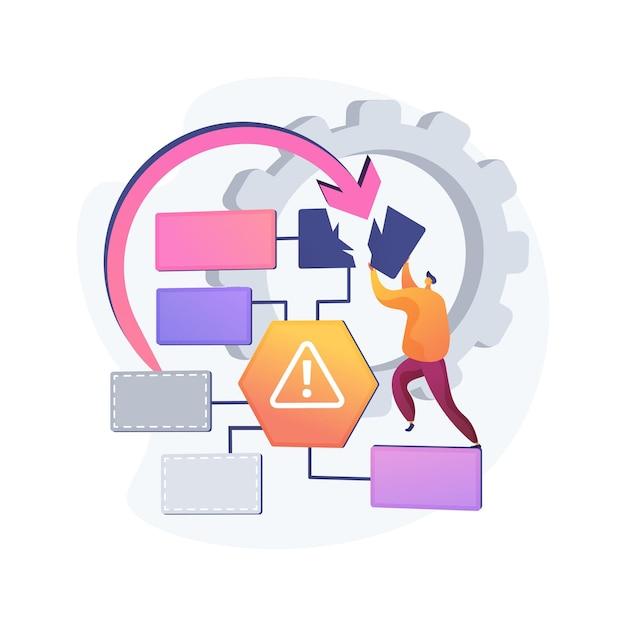Working from home is fast becoming the norm, and with it come unique challenges. Given this, every business should have an effective business continuity plan in place to ensure seamless operations, even in difficult times.
This plan outlines procedures and policies to ensure business continuity in the event of sudden disruptions, including pandemics, power outages, cyber attacks, and natural disasters.
In this blog post, we will explore what a business continuity plan is, its differences with a business resilience plan, and the five components of an effective business continuity plan. We will also provide a business continuity plan work-from-home template and examine the three primary areas of focus for business continuity.
Read on to learn how you can protect your business operations and provide a seamless working experience for your remote workforce – even in the most challenging of situations.
Business Continuity Plan for Remote Workers
In today’s age of digitalization, more and more businesses are opting for a remote workforce. While it provides flexibility and convenience, it also comes with its own set of challenges. Remote workers face unique risks, such as lack of communication and difficulty in accessing essential company resources. That’s why it’s crucial for companies to have a business continuity plan in place for their remote workers.
Importance of a Business Continuity Plan
A business continuity plan for remote workers is paramount for the continuity, security, and success of a business. BCP ensures that employees can work remotely in an organized and safe manner, regardless of unexpected events. Be it a natural disaster, power outage, or cybersecurity threat, a BCP ensures that the business can function with minimal disruption while keeping the safety of their remote employees in mind.
Elements of a BCP
A BCP for remote workers should include measures that address critical factors required for work-based operations, such as communication, access to essential business resources, and cybersecurity. The plan should be easy to follow, and all employees should be aware of its contents.
Communication
Clear communication between remote employees and their supervisors is essential for smooth workflow and operations. The plan must include communication protocols, such as regular check-ins and a list of necessary communication tools, such as Skype or Zoom.
Essential Business Resources
Remote employees need to access essential resources such as documents, files, and data. The plan should define how remote employees can access these resources and ensure that they are always available and secure.
Cybersecurity
As remote workers access documents and files outside of the company’s secure network, the risk of cybersecurity threats increases. A BCP must outline measures to prevent data breaches, such as regular security audits, password protection, and training for remote workers.
A business continuity plan for remote workers is crucial for a company’s success and security. The plan should encompass measures to ensure clear communication, access to essential resources and mitigate cybersecurity risks. Remote workers must be made aware of the plan and trained in its implementation to ensure business continuity under any adverse conditions.
What Is a Business Continuity Plan
If you’re running a business, you know how important it is to be prepared for any eventuality. Whether you’re dealing with a natural disaster, a power outage, or a global pandemic that forces everyone to work from home, you need to have a plan in place that will allow your business to keep going no matter what.
That’s where a business continuity plan comes in. A business continuity plan is a document that outlines the steps your business will take to keep operating in the event of an emergency. It covers everything from communication tools and work-from-home policies to data backup and disaster recovery measures.
Why Do You Need a Business Continuity Plan
There are a number of reasons why you need a business continuity plan. First and foremost, it ensures that your business will be able to keep operating even in the face of a major disruption. This will help you maintain your revenue streams and keep your customers happy.
In addition, having a business continuity plan in place demonstrates to your employees and stakeholders that you take their safety and well-being seriously. It also provides a framework for how you will respond to emergencies, which can help to reduce anxiety and confusion during these stressful times.
What Should Your Business Continuity Plan Include
Your business continuity plan should include a number of key elements, including:
- A clear definition of what constitutes an emergency for your business
- A list of essential personnel and their contact information
- A communication plan that outlines how you will keep in touch with your employees, customers, and suppliers
- A plan for how your employees will work remotely if necessary
- A plan for data backup and recovery in the event of a cyber attack or other data loss event
- A list of essential supplies and equipment that you will need to keep your business operating
In short, a business continuity plan is an essential tool for every business owner. By taking the time to create a plan that covers all of the key elements of your operations, you can ensure that your business will be able to weather any storm and come out on top. So, what are you waiting for? Start your plan today!
Business Resilience Plan vs Business Continuity
The terms business resilience plan and business continuity are often used interchangeably, but they are not the same. While both plans aim to maintain and restore business operations during and after a crisis, they differ in their strategic orientation.
Understanding Business Resilience Plan
A business resilience plan is a proactive approach that involves identifying potential risks and vulnerabilities and putting measures in place to mitigate them. It focuses on developing a flexible and adaptable framework to withstand and recover from adverse situations. Business resilience plans consider the long-term impacts of risks and how the organization can evolve to become stronger after a crisis has occurred.
Understanding Business Continuity Plan
On the other hand, a business continuity plan focuses more on the short-term response to a crisis. It aims to get the business back up and running as quickly as possible after a disruptive event. Business continuity plans are reactive in nature and primarily aimed at mitigating the immediate effects of a crisis.
Which One Should You Choose
While both plans may seem similar, they serve different purposes. The choice between a business resilience plan and a business continuity plan depends on various factors, such as the nature of the business, the industry, and the potential risks.
Generally, businesses that operate in high-risk environments, such as the financial sector, healthcare, or emergency services, should invest more in business continuity plans. In contrast, businesses operating in low-risk environments such as startups, or those with a diversified product line may consider building their business resilience plans.
Both business resilience plans and business continuity plans are essential for organizations in today’s uncertain environment. However, choosing the right plan depends on various factors. Having a robust strategy in place has become more critical than ever, given the unprecedented times we live in today. Having a positive attitude, backed up by a well-designed plan, will significantly enhance your organization’s chances of coming out strong when faced with crisis.
Business Continuity Plan Work from Home Template
If you’re running a remote team, it’s essential to have a business continuity plan in place to ensure that your team stays productive and efficient. One crucial aspect of such a plan is having a work from home template. This template serves as a guide on how your team should work when operating remotely. Here are some crucial things that your template must include:
Work from Home Policy
Your template should include a work from home policy that specifies the expectations and responsibilities of your team members. It should outline the work hours, communication channels, and the tools required to complete tasks.
Communication Guidelines
Communication is crucial when working remotely. Your business continuity plan work from home template should include communication guidelines. These guidelines should specify the methods of communication, the frequency of communication, and the people responsible for communication.
Equipment Requirements
This subsection of the template should list the tools and equipment necessary to work from home. It should include laptops, phones, and other essential tools. Ensure that your team members have access to the required tools and that they know how to use them.
Data Protection
Working remotely poses a data security risk. It’s essential to include guidelines for data protection in your business continuity plan work from home template. The guidelines should outline the measures you have put in place to protect data and the responsibilities of your team members in protecting sensitive information.
Work/Life Balance
Remote work can blur the boundaries between work and personal life. It’s crucial to include guidelines in your template that emphasize work/life balance. Encourage your team members to take breaks, go for walks, and engage in other activities that promote their overall wellbeing.
In summary, your business continuity plan work from home template should include a work from home policy, communication guidelines, equipment requirements, data protection guidelines, and work/life balance guidelines. Having such a template will help your team remain productive and efficient even when working remotely.
What are the 5 Components of a Business Continuity Plan
Business continuity is essential for remote teams in the event of a disaster. Your business continuity plan should have the following five components:
1. Communication Strategy
In an emergency situation, communication is essential. It would help if you had a communication strategy outlining who needs to be notified and how. Your strategy should include details such as emergency contact details, communication channels and protocols, and a plan for how to notify team members of any changes.
2. Recovery and Continuity Strategy
Your business continuity plan should have a recovery and continuity strategy that outlines procedures for resuming critical business functions in the event of a crisis. This strategy should define what steps should be taken, who is responsible for each step, and what tools and resources will be required.
3. Data Backup and Recovery Plan
A data backup and recovery plan is critical for any organization. Your plan should provide details on how to backup critical data and how to restore it in the event of a data loss incident. It should also include a detailed inventory of all data backups, including where they are stored and how they can be accessed.
4. Incident Response Plan
Your business continuity plan should have an incident response plan that outlines how to respond to a crisis quickly. The plan should detail the steps to be taken to contain the crisis, notify stakeholders, and begin the recovery process.
5. Business Impact Analysis
A business impact analysis serves to identify and prioritize critical business processes and systems. It outlines how these processes are essential to your organization’s operations and what the impact would be if they were unavailable for an extended period. This analysis helps to prioritize which areas of your business continuity plan need the most attention.
In conclusion, having a business continuity plan for remote workers is essential in today’s digital age. Following a well-defined strategy and taking the time to prepare ensures that your team can react quickly and recover from a crisis. A comprehensive business continuity plan should include a communication strategy, recovery and continuity strategy, data backup and recovery plan, incident response plan, and business impact analysis.
What Are the Three Main Areas Business Continuity Focuses On
When it comes to creating an effective business continuity plan for remote workers, it’s essential to have a clear understanding of the core areas that need to be addressed. Here are the three main areas that every organization should focus on:
1. People
Your employees are the most critical asset of your organization. Therefore, it’s important to ensure their safety, well-being, and productivity in the event of a crisis. You need to have a clear communication plan that ensures all employees are notified quickly and efficiently. Also, empower your employees with the right tools and training that will enable them to work remotely and access critical business systems seamlessly.
2. Processes
Your business continuity plan must ensure that critical processes, functions, and systems remain operational, even during a crisis. Identify your most critical processes and prioritize their continuity. Your plan should include dedicated backups and alternative systems to ensure that your business can continue to function with minimal disruption.
3. Technology
The technology you use plays a crucial role in ensuring the continuity of your business operations. It’s important to have a robust and scalable IT infrastructure that can meet the demands of remote work. This includes having the right software, hardware, and cloud storage systems in place, as well as effective data backup and disaster recovery procedures.
In summary, effective business continuity planning is crucial for remote workers, and it must focus on three main areas: people, processes, and technology. By addressing these core areas, you can ensure that your business can continue to operate even during times of crisis.



